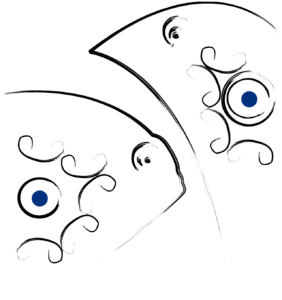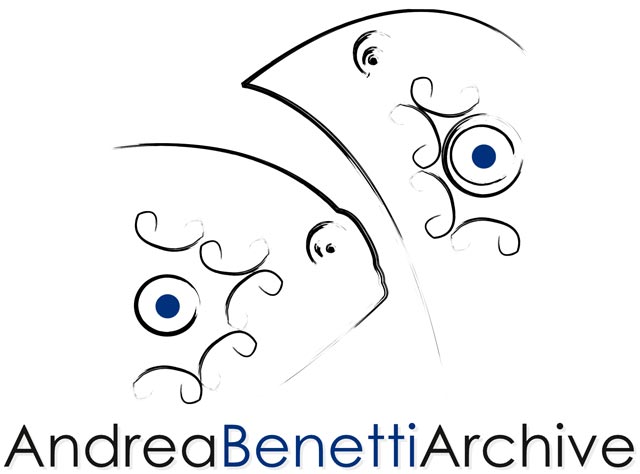Andrea Benetti: Neo-Cave Art
That attempt to narrate the world on walls, on bare rock, through a stylized sketch— a visual impression that primitive man felt the need to render with essential and immediate tools— is more than a rudimentary artistic instinct; it is a symbol of a healthier and more intelligent relationship with the world than the one we experience today.This is the philosophy of Andrea Benetti (born in 1964, from Bologna), the creator of Neo-Cave Painting, who has been successfully expressing his art for years. In addition to having exhibited in prestigious venues, his works are now permanently housed in about a dozen museums, institutions, and major national and international collections.In November, Benetti’s Neo-Cave Painting arrived at Palazzo Taverna in Rome, alongside the works of the great masters of the 20th century.
Tell us about the exhibition Portraits d’Artistes, which has just concluded and in which you participated.
“Portraits d’Artistes” is the title of the international exhibition organized by the Amedeo Modigliani Institut Archives Légales Paris-Rome, hosted at its headquarters (Palazzo Taverna – Rome) and personally curated by its president, Christian Parisot, alongside Pierfrancesco Pensosi. Vittorio Sgarbi presented the exhibition project to the press.It was a gathering of globally recognized and historically established artists, alongside contemporary artists who are making a significant impact on today’s art scene.“Fortunately, and perhaps also thanks to my merit, I was chosen and invited to take part in this international exhibition with my painting. It was truly a pleasure to see my Neo-Cave Painting included in the catalog (published by Casa Modigliani Edizioni), alongside works by Giorgio De Chirico, Amedeo Modigliani, Andy Warhol, Keith Haring, Mario Schifano, Max Jacob, Carlo Corsi, Guido Cadorin, Jules Pascin…”
The Neo-Cave Art Manifesto: tell us about its essential points.
The world, poorly led by man over the past two centuries, has embarked on a dead-end path, heading toward self-destruction, passing through a long period (already underway) dominated by an unbearable nihilism.We believe it is necessary to reset and restart by placing human dignity and respect for the environment at the core of human will.Symbolically, to reset the art world means returning to cave paintings, which primitive man created on the walls of caves.Thus, the Neo-Cave Art Manifesto, which I wrote and presented at the 53rd Venice Biennale, seeks to wipe the slate clean and rebuild a better world—one where profit and speculation do not take precedence but rather respect for life, altruism, and love for those around us.
Instinct and color seem to dominate your art. How do you experience the approach to the canvas?
The canvas is a receptor, in front of which a painter externalizes and captures his emotions, ideas, and the desire to communicate something to the world.
Sometimes, I even see it as a tool that dispels laziness and restores hope—the desire to fully embrace every moment of my creativity.
For this reason, I often feel like a primitive man, representing what surrounds me. However, today, the subjects are no longer horses, bison, or bulls but rather cars, airplanes, golfers, boats, trains…
Oil and cocoa on canvas, oil and hibiscus on canvas—your creations reflect a living and harmonious relationship with nature and the surrounding reality, as demonstrated by your participation in the Michetti Prize. Can your art be defined as eco-sustainable?
Rather than eco-sustainable art, I would call it eco-sensitive art—an art that takes to heart today’s pressing issues, expressing concern for the responsible management of resources and intolerance and firm condemnation of the irresponsible exploitation of the Earth, which only serves short-sighted profit for a few at the expense of many.
I was therefore deeply honored to receive an invitation from the Michetti Foundation to participate in the 61st edition of the historic and prestigious contemporary art exhibition, in the section titled “Art and Environment.”
Tell us about your book Esplorazione inconsueta all’interno della velocità.
It is a book I love, as I believe I conceived it with a far-sighted intuition.
So far, the most fitting definition attributed to it comes from Gregorio Rossi, the renowned art critic and historian, who described it as “a 360-degree anthology.”
Inside, it contains philosophical theories, painting, sculpture, photography, essays by professors, and art critiques.
The entire book revolves around the theme of speed, which I chose in celebration of the centenary of Futurism, a movement that placed speed at the heart of its vision.
For now, the book is a collector’s item, printed with canvas-bound covers, presented in a designer box, and produced in a limited, signed, and numbered edition. However, a publisher will soon bring it to a traditional distribution circuit.
Beyond your fascination with cave painting, which periods in art history have influenced your artistic journey?
As you mentioned, my primary influence comes from cave painting.
Looking at more recent times, I have been deeply fascinated by abstractionism and I adore the paintings of Kandinsky and Klee, as well as the sublime surrealism of Miró.
Nonetheless, I believe that one can be influenced by an artist’s work without even being fully aware of it.
Sonia Cosco |
Journalist and Art Critic |




